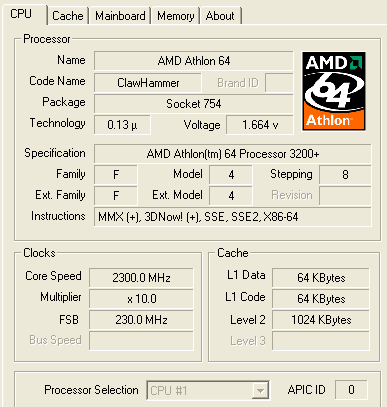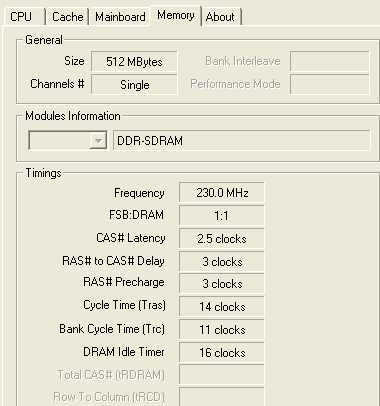Systems setup and notes
Here's a quick rundown of the test system should you wish to compare benchmark results with your own.- AMD Athlon 64 3200+ Clawhammer CPU. RAM running with an 10 divisor (DDR400, single channel)
- AMD Athlon 64 FX51 CPU (2.2GHz) RAM running with an 11 divisor (DDR400, dual channel)
- Intel Pentium 4 3.2GHz ES 800FSB CPU
- AMD Barton XP3200+ S462 CPU (2200MHz / 200FSB
Other components
- ATi Radeon 9
Software
- Windows XP Professional
- DirectX9.0a
Notes
The new Athlon 64 3200+ CPU uses AMD's PR rating scheme to decent effect. AMD has been trying to educate the mass public that a high clock speed isn't always indicative of true performance. Rather, AMD states, one must look at the amount of work done by a CPU in a single clock cycle and then compare that with the competition's or an older architecture. The Athlon 64 3200+ clocks in at 2.0GHz; 200MHz slower than the Barton XP3200+. Should we then allow AMD to classify the new CPU with the same performance code attributed to the older CPU ?. That depends on its performance in a wide cross-section of benchmarks. If it can equal or surpass many of the Barton XP3200's benchmarks it should deserve its PR rating. On-die memory controller, larger TLBs, improved branch prediction, larger L2 cache and other benefits should give it benchmarking parity or superiority. It's now time to find out as we put it and two chipsets through the HEXUS benchmarking run. A standard 3.2GHz Northwood P4, an XP3200+ (Barton) and the impressive Athlon FX-51 will provide comparative results.
Issues
The EPoX VIA K8T800 was impressively stable for a first-generation motherboard. There were no freezes, instability or unexplained crashes during week-long testing. Two 256MByte DIMMs of Corsair XMS3500C2 worked effortlessly at DDR460 speeds, all with the same stability as the stock system.
The same cannot be said about the Shuttle nForce3-powered AN50R, unfortunately. Using the same two modules, the board would often crash when installing Windows XP Professional. All settings were at default speeds. After a number of attempts the board managed to install the OS. We would still run into the odd unexplained crash here or there. It did manage to complete all of our benchmarks without too much difficulty, but one always had the nagging feeling that it may crash at any given time.
Overclocking
Both motherboards locked out manual adjustment of RAM latencies, and both attributed 2.5-3-3-14 timings at DDR400 speeds. With AMD integrating the memory controller on the CPU we didn't expect there to be a great deal of benchmarking deviation. Overclocking, by dint of a locked multiplier, was undertaken by simply raising the CPU clock. The Shuttle AN50R began running into stability problems at 218MHz (2180MHz overall speed). It would refuse to even load the OS at 2200MHz with system RAM set to 220MHz. Increasing the RAM divisor, and thereby decreasing the RAM speed, still didn't relieve us of stability problems. CPU voltage didn't help either.
The EPoX 8HDA3+, on the other hand, booted effortlessly at 2200MHz / 220MHz RAM, and it even managed decent stability at 2300MHz / 230MHz RAM. In view of this, it appears as if the Shuttle is suffering from a chipset limitation. Raising the chipset's voltage didn't solve stability problems at 220MHz.


Athlon 64 3200+ at 2.3GHz / 230MHz memory. Note the single channel memory. That's one of the Clawhammer's 'disadvantages' when compared to the dual channel FX-5x. Benchmarks will be conducted at 1024x768x32 @ 75Hz unless otherwise stated. The EPoX 8HDA3+ and Athlon 64 3200+ was also benchmarked at 2200MHz / 220MHz memory. The thinking behind this was to see how a single-channel memory controller, albeit with DDR440 RAM, could compare with the FX-51's dual-channel ECC DDR400 memory. Both CPUs at 2200MHz, naturally. We expect the Athlon 64 3200+ to do well in memory intensive tasks. Pure computational benchmarks will no doubt be hindered by its 2GHz clock speed.
The EPoX 8HDA3+ ran the CPU at 2200.00MHz exactly. The Shuttle AN50R was a shade slower at 2199.6MHz.









